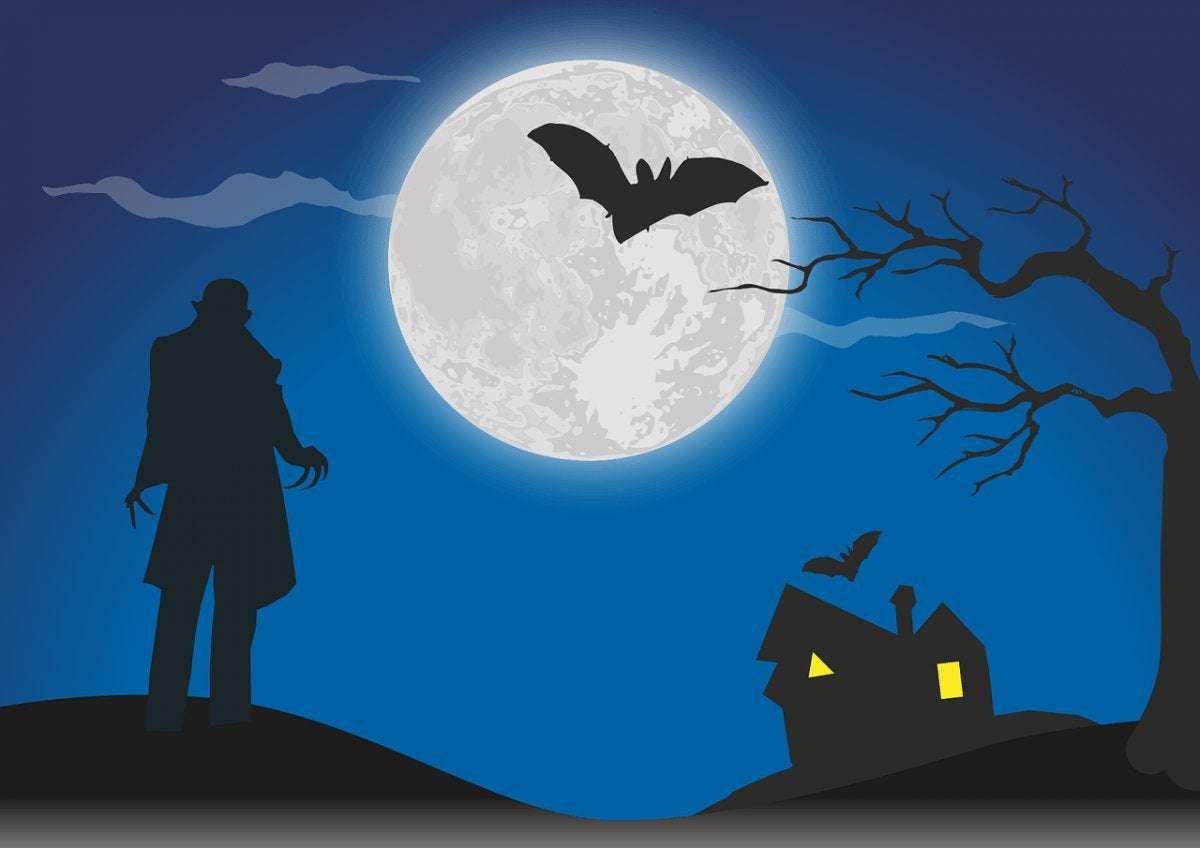Ever noticed that Halloween pictures always show a full Moon? But how often does the full Moon actually fall on Halloween? And is there anything special about the first full Moon after Halloween?
Of course, Halloween—also known as All Hallows’ Eve—always occurs on October 31; it’s only the day of the week that changes from year to year.
The origin of Halloween can be traced back to Samhain (pronounced SOW-in, which rhymes with COW-in), which was an ancient Celtic festival that was celebrated to mark the end of harvesttime. It was also the end of their year and the beginning of the new year, so it was “in between” the two years. The spirits of the dead wandered around during this time in the moonlight. See more about the origins of Halloween traditions.
What’s The Moon Phase for Halloween 2019?
Despite all the creative Halloween full Moon pictures, this is not a common occurrence and only happens every 18 to 19 years!
In 2019, the Moon will be waxing on Halloween, having just been a new Moon on October 27. This means that only a small sliver of the beautiful crescent Moon will be illuminated on Halloween night—just 15%—giving the celebration an even spookier aura.
It was last full on Sunday, October 13. When will it appear full again? Next year! There will a completely full Moon for Halloween 2020! Learn about October’s full Moon: The Full Hunter’s Moon.
For a truly spooky night, look to the new Moon, when darkness reigns. During this Moon phase, the lunar disk goes black, so the night appears “moonless.” Of course, the Moon is there, but it’s not lit up by the Sun due to its position in its orbit. See more about the so-called dark side of the Moon.
The Moon will be between 0% and 1% illumination on Halloween in 2024, depending on your timezone. See our Moon Phase Calendar—customized by zip code.
An even rarer oddity is a “Black Moon.” Although this is not technically an astronomical term, “Black Moon” has come to mean the second new Moon in a calendar month. (It’s somewhat the opposite of a “Blue Moon,” which is popularly defined as the second full Moon in a month.) The next Black Moon in North America will occur in July 2019. Read more about the Black Moon.
The first full Moon after Halloween is November’s Moon, which is traditionally called the Full Beaver Moon. According to the Algonquin tribes (and early colonists), this was the time to set beaver traps before the swamps froze, to ensure a supply of warm winter furs.
If you carefully observe nature, you might notice that there are certainly patterns and traditions that happen during the first full Moon after Halloween.
The full Moon after Halloween is thought to be a time when the deer rut (mating season) is in full force.
Our readers share that it’s the time when snow geese arrive at Chesapeake Bay in lower Delaware and Maryland.
For many folks, garlic is planted after the first few days of Halloween’s full Moon.
According to folklore, it’s best to dig sweet potatoes from the ground during the full moon of November.
What would you name the first full Moon after Halloween? Post your comment below!

Ikantbeliveit on June 20th, 2020 at 22:35 UTC »
So Halloween has a full moon this year AND its on a Saturday?!
Boy, that's gonna to be a wild night for me....as I scroll through reddit until 2 am then go to bed
thxxx1337 on June 20th, 2020 at 22:31 UTC »
Daylight savings is also on Halloween (technically Sunday morning). That's an extra hour of partying.
Landlubber77 on June 20th, 2020 at 21:58 UTC »
Great, now I have no choice but to be a werewolf this year.